Yazd is a historical city in the center of Iran neighboring desert areas of the country. The houses built in the city used to share architectural features and style. Wishing to visit traditional Yazdi architecture, let's visit Khan-e Lari House which can be a good example of the houses constructed following the shared architectural style .
Khan-e Lari House is located next to Kolah Farangi Mansion in Fahadan Neighborhood, Imam Khomeini Street.
.jpg)
The History of Khan-e Lari House
Around 270 years ago, a group of merchants from Lar in Fars Province settled in Yazd. Haj Qolam Hossein Mollazienal, one of their descendants, built a house in Fahadan Neighborhood in 1243 SH which is known as Khan-e Lari House.
A combination of stunning wooden doors, windows, Sash windows, chambers with mirror works and paintings have made the house an elegant example of beautiful and luxury houses in 13th century SH.
.jpg)
Architecture of Khan-e Lari House
We can find Khan-e Lari House while wandering in Fahadan Neighborhood. In a lane, you can see a historial monument with a sign introducing it as Historical Documents Museum . On the door of the historical monuments in Yazd, we can usually find two knockers which would make different sounds: one was knocked by women and the other one was knocked by men.
Passing through the door, we will get into a vestibule which was built as a waiting room for the guests before they were allowed to go inside the house. We will wait here a little to feel the coolness of this part of the house. Having bought tickets, we can enter the courtyard.
.jpg)
Khan-e Lariha House includes three courtyards and six mansions, the inner courtyard which is the largest courtyard of the house was allocated to maharim, intimate family members, and was considered the main courtyard. The outer courtyard was allocated to the guests and there was another courtyard with less significance than the two mentioned courtyards.
Let's enter the large and main courtyard of the house with a large pool in the middle. We can find a large takht (wooden throne) which legs are in water to avoid harassment of insects. At summer nights, members of the family would gather to hear stories from Shahname retold by elderlies under desert starry sky.
.jpg)
Khan e Lari House , A House for Four Seasons
Lariha House is one of the featured examples of traditional houses in Yazd which were built in four sides. In other words, each side of the house was built compatible to a season. The southern side with a hall and badgirs (wind towers) was used for living in summer, the northern side was used in winter, the eastern side including a mirror hall, a kitchen, and a sardab was appropriate for living in fall and the western side was considered as terrace to be used in spring.
It is interesting to know that eastern side of the house was the least used part due to attracting the most share of heat and sun beam. For the same reason, houses were usually built in three sides.
.jpg)
Let's go to visit the lofty badgir of the house . Although there is no pool below it, we can feel cool whenever we stand underneath the badgir all over the year. That is why this side was used in summer.
Now let's head to the most beautiful panjdari chamber in the house that is mirror hall. The owner of the house once used the hall for receiving his Iranian and foreigner guests.
The contemporary architects in Qajar dynasty were employed to build houses with Panjadri (five - door), Sedari (three - door), and Haftdari (seven - door) rooms. So the house would look more beautiful and symmetric.
Getting out of the mirror hall, we head to Payab ( water passage way ). We go down 38 stairs to get into the payab knowing that there remained no qanat, the water of which could run through here.
We must consider the fact that it was difficult to access water in desert and private accessing to water was special to nobles; while, ordinary people could get water from public water reservoirs.
.jpg)
Interestingly, Khan e Lari House had two doors, one of which opened into an alley in which there were some other houses. At the end of that alley, there was another big door. Such alleys were called Darband which show wealth of members and owners of houses in there.
.jpg)
For more information about Khan-e Lariha House, please contact Raadina Support.
Online Support










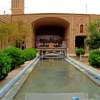
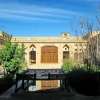
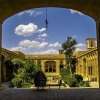
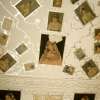
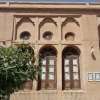
.jpg)
.jpg)
.jpg)
.jpg)
.jpg)
.jpg)
.jpg)
